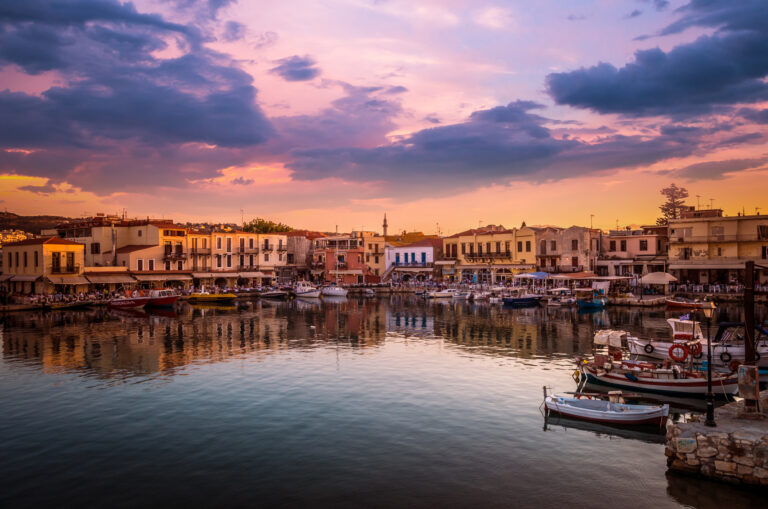The Ghost Ship of Souda Bay
The Ghost Ship of Souda Bay is an intriguing maritime legend that adds a mysterious dimension to the rich tapestry of Crete’s history. Souda Bay, located on the northwest coast of Crete, has been an important strategic point throughout history owing to its large natural harbour. It is here that the legend of the ghost ship takes place, blending historical events with maritime folklore.
Legend of the Ghost Ship
- Phantom Vessel: The legend tells of a ghostly ship seen sailing in Souda Bay, often described as an ancient-looking vessel that appears and then mysteriously vanishes into thin air.
- Associations with Historical Events: The sightings of this spectral ship are usually thought to be linked to various historical naval battles that occurred in and around Souda Bay. Some believe the ship is a remnant or echo of a sunken warship from one of these battles.
Accounts and Sightings
- Eyewitness Reports: There have been various reports and anecdotes from locals and sailors claiming to have seen the ghost ship. These accounts often describe the ship as eerily silent, with a ghostly glow.
- Lack of Physical Evidence: Despite numerous sightings, there has yet to be physical evidence to conclusively prove the ship’s existence, adding to its mystique.
Explanations and Theories
- Natural Phenomena: Some explanations for the sightings suggest natural phenomena, such as optical illusions created by atmospheric conditions or reflections on the water.
- Folklore and Superstition: For others, the ghost ship is a tale of folklore, symbolizing the maritime heritage of Crete and the souls lost at sea in various battles.

Modern Interest and Interpretations
- Tourist Attraction: The legend of the ghost ship is a point of interest for tourists visiting Souda Bay and adds a layer of mystery and allure to the area.
- Symbolism: In a broader sense, the ghost ship can be seen as a symbol of the enduring memory of the past, representing the historical battles and events that have shaped the identity of Souda Bay and Crete.
Like many maritime myths, the legend of the Ghost Ship of Souda Bay is layered and multifaceted, often blurring the lines between historical facts, natural phenomena, and local folklore. Here’s a deeper exploration of various aspects of this intriguing legend:
Historical Context and Battles
- Strategic Importance: Souda Bay has been a crucial naval and military site throughout history, owing to its strategic position in the Mediterranean. Its history is marked by numerous conflicts, including those involving major powers like the Venetians and Ottomans, and even involvement in World War II.
- Historical Battles: The bay witnessed several naval battles, particularly during the Venetian-Ottoman conflicts. The ghost ship is sometimes considered a spectral remnant of a vessel from these historical clashes.
Local Beliefs and Superstitions
- Maritime Superstitions: Seafaring communities often have rich traditions of superstitions and legends, with ghost ships being a common theme globally. In Crete, the Ghost Ship of Souda Bay fits into this broader maritime folklore.
- Cultural Interpretation: The ghost ship could embody the memories and spirits of those lost at sea, a common theme in seafaring tales where the sea is both a giver of life and a taker.
Eyewitness Accounts and Variations of the Legend
- Descriptions of Sightings: Accounts of the ghost ship’s sightings vary. Some describe it as a galleon, others as a frigate, often shrouded in mist and appearing during certain weather conditions or times of day.
- Shared Experiences: The shared nature of these sightings, across different witnesses over time, adds a layer of intrigue and perpetuates the legend within the local community.
Natural Explanations
- Fata Morgana: One plausible explanation for the sightings is a Fata Morgana, a complex form of mirage that distorts distant objects, which can occur over the sea horizon.
- Atmospheric Conditions: Unique atmospheric conditions in Souda Bay could contribute to visual distortions, particularly at dawn or dusk, leading to the illusion of a ghost ship.
Impact on Modern Culture and Tourism
- Tourism Draw: The legend is a point of interest for visitors to Souda Bay, adding to the area’s mystique and appeal as a destination with a rich and mysterious history.
- Cultural and Artistic Inspiration: The story of the ghost ship has inspired various forms of art and literature, becoming part of the broader cultural fabric of Crete.
Skepticism and Rational Interpretation
- Scepticism: While the legend is compelling, there is a healthy degree of scepticism. Sceptics often propose rational explanations based on natural phenomena or exaggerated tales.
- Absence of Physical Evidence: The lack of concrete evidence or historical records of a specific shipwreck in the bay that could account for the legend fuels the rationalist interpretations.
Conclusion
The Ghost Ship of Souda Bay, whether a product of natural phenomena, a fragment of collective memory, or simply a captivating legend, is an integral part of the maritime lore of Crete. It reflects the island’s rich naval history and how stories and legends are woven into the fabric of Cretan culture. As with many legends, its true nature might remain a mystery, but it continues to capture the imagination and intrigue of those who visit or hear of Souda Bay’s ghostly vessel.







